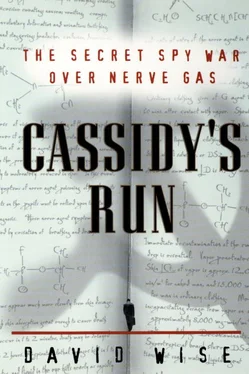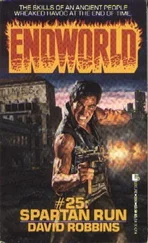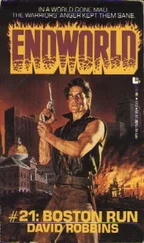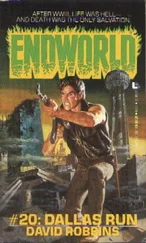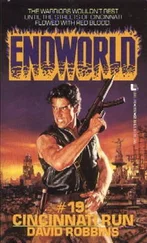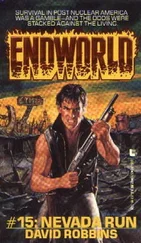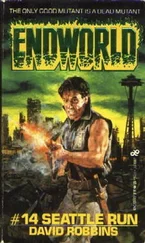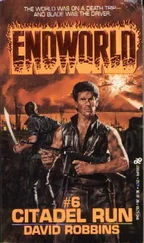Even though thedrops in Florida were now activated, Cassidy traveled to Washington again on July 3, 1971, to get new instructions and meet personally with Mikhail Danilin.
The GRU officer said he had received the documents that Cassidy had left on Snell Isle, which meant, of course, that Lopez had gotten them safely to the Soviets in Mexico City.
Danilin then told Cassidy what kinds of documents he wanted from STRICOM. He instructed Cassidy to look in particular for documents dealing with future U.S. military exercises. They discussed the dates and locations of the next several drops in St. Petersburg.
Inside the hollow rock that Cassidy picked up before the meeting was a package containing ten thousand dollars and new instructions on a microdot concealed inside a postcard. The package also contained a blank sheet of paper with secret writing that duplicated and backed up the instructions on the microdot.
Cassidy was told he would be sent to Mexico again the following July. This time, Danilin provided detailed instructions for the contact. Cassidy was to stay at the San Marcos Hotel. On July 22, before noon, he was to confirm his arrival by placing a red chalk mark on a white fence pole on Calle Río Lerma, near his hotel. Also described were a dead drop where he would leave his film, a meeting site, and various signal sites. Cassidy was not thrilled at the news; aside from the risk of meeting the Soviets abroad on dark streets, there were the gastronomic dangers lurking in Mexico City.
The next domestic drop was set for the night of September 10, 1971, at the same palm tree on Snell Isle. O’Flaherty again prepared to station agents in Jerry Koontz’s condo and in the engineering company. Learning from the previous drop, O’Flaherty arranged this time for a third observation post.
“The third spot was a private school on Snell Isle Boulevard. I approached the dean, Gordon Tucker. He had to check with the board. Charles Randolph Wedding, who later became the mayor of Saint Petersburg, was on the board, and he approved.”
Promptly at 9 P.M., Cassidy made the drop at the base of the palm tree, as O’Flaherty and the agents with him watched. This time, Cassidy left films of a document stamped TOP SECRET, another marked SECRET, and a third marked CONFIDENTIAL, as well as other material.
The document marked TOP SECRET was entitled “USSTRICOM… Programming Plan 2-71,” dated June 22, 1971. It described the establishment of the U.S. Readiness Command under instructions from the Joint Chiefs of Staff.
The document stamped SECRET dealt with the withdrawal of U.S. forces from Vietnam. It was called “Letter of Instruction for the Eighth Incremental Redeployment of U.S. Army Forces from RVN (U) — AGDAA(M) (6 JULY 71) OPS OD TR July 14, 1971.”
As the FBI agents waited, tension built inside the darkened condo. Then, around nine-thirty, the telephone rang, and O’Flaherty grabbed it. “An agent at the school site called me on an open phone line, a land line as we refer to it. ‘Jack, looks like we’ve got him here. Female driving, child in the car, and another unidentified male.’” Gilberto Lopez was back, this time with his wife, Alicia, their young son, and a second man. The FBI cameras were whirring away.
O’Flaherty continued his narrative: “The subject gets out of the car, a gray Renault, license number LP9414, about a block from the drop site, and starts walking east on Snell Isle Boulevard. He cuts into a yard and again comes out from the bushes. This time he comes right around in front of the tree and picks up the rock. He left a paper bag at the tree. It was a Publix bag both times.
“His wife stops right below our LO, the lookout. She pulls up the car past the intersection and waits for him about a block beyond the drop. He crosses the street, walks a block to the car, right under the engineering firm. He gets in, and they drive off the island at the eastern end.”
Three months later, on December 20, the espionage ballet was repeated, with the FBI at the same three observation posts. Inside the hollow rock this time were films of three documents stamped SECRET, including another one dealing with troop pullouts from Vietnam, dated September 24, 1971, and entitled “Letter of Instruction for the Ninth Incremental Redeployment of U.S. Army Forces from RVN(U), — AGDA-A(M) (17 SEPT 71) OPS OD TR.”
As Cassidy was placing his fake rock, FBI agents saw a white two-door Vega, with Florida plates, 1E-23144, cruising north on nearby North Shore Drive. At 9:29 P.M., Gilberto Lopez appeared again, on foot, but with a bold new approach, O’Flaherty recalled. “Lopez, his wife, and their two-year-old son walk up. They’re holding the kid’s hand. Lopez, actively assisted by his wife, began searching the area under the bushes, and they clear the drop. They left in the Vega.”
The Russians were picking up the pace. Cassidy had now had three drops and a personal meeting in Washington in only nine months.
Four days after Christmas, although it was not the usual form of communication from the Soviets, Cassidy received a one-page letter, dated Christmas Day, in the mail, addressed to him at his home in St. Petersburg. Inside was what looked like a blank piece of paper. To develop it, Cassidy used the special pencil lead he had received from the GRU. But it was not an easy task.
“The lead was difficult to crush,” O’Flaherty said. “Joe was using a rolling pin for a while to crush it into powder and then add water. The idea was to dissolve it and use a cotton swab on the blank page, and it would raise the writing. The lab said the writing itself was prepared from barium, strontium, and lead and raised with tetrahydroxyquinone. The lab identified that as the chemical in the special pencil lead.” [4] Tetrahydroxyquinone is an organic compound used in chemistry as a titration indicator to detect the presence of barium and other substances.
As Cassidy swabbed cotton over the blank sheet he had received, the words slowly appeared:
“Dear Friend, Thanks for your efforts Top Secret September document was good. For it I’ll pay three thousand for whole September package I owe you six thousand. Don’t worry about money, I never failed you.”
The letter went on to approve the next series of numbered drop sites. “Places 2, 5, 6, 7 aren’t good, so correct our schedule as follows: September ten place ten; December twenty place three… I need new Secret document… now your film are good. My best wishes for New Year.”
The letter also informed Cassidy: “Your trip abroad is canceled.” For Cassidy, it was a reprieve from another round of beer, peanuts, and corn flakes in Mexico City.
But for the FBI, the cancellation posed a puzzle. The counterintelligence analysts speculated that it was linked to the FBI’s recent arrest on espionage charges of Walter Perkins, an air force master sergeant. Perkins had been the highest-ranking noncommissioned intelligence officer in the Air Defense Weapons Center at Tyndall Air Force Base, in the Florida panhandle. He had had complete access to classified information on sophisticated air-to-air missile systems. He had been arrested by the FBI in October at the Panama City airport as he prepared to board a plane for Mexico City with five classified documents in his briefcase. According to the FBI, Perkins was en route to meet his GRU handler.
At Perkins’s court-martial, an air force counterintelligence agent in the Office of Special Investigations said the tip about Perkins had come from the police in Tokyo, where the sergeant had been formerly stationed. An informant said that Perkins had been in contact with Edward Khavanov, a Soviet colonel in the Tokyo embassy. OSI then put Perkins under full-time surveillance, installing six video cameras in his office that recorded him copying information from classified documents onto index cards. Perkins was convicted and sentenced to three years by a military judge.
Читать дальше
